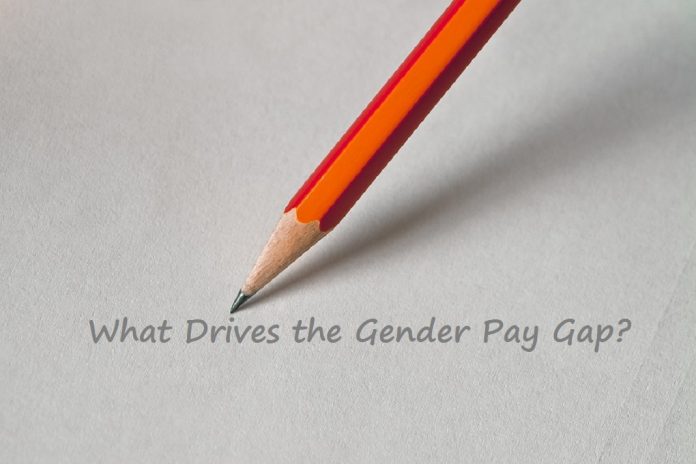by Ailbhe Dennehy, Employment Partner at Matheson
Gender pay gap (“GPG“) reporting requirements for employers with 250+ employees will finally become a reality in 2022. While the regulations to the Gender Pay Gap Information Act 2021 remain outstanding, despite the imminent “snapshot” date of June 2022 and subsequent “reporting” date of December 2022, earlier last month the Department of Children, Equality, Disability, Integration and Youth published guidance for employers. Although these publications set out the suggested approach for employers when getting to grips with the GPG metrics and outline some useful FAQs, the guidelines are only intended to provide guidance and we await the final regulations to provide the legal basis for reporting.
In the meantime, we have shifted gears and taken a closer look at a Stanford University case-study analysing the GPG among male and female Uber drivers. Studies such as this one have demonstrated that understanding the structural and inherent causes of a GPG within a particular organisation is essential to enable that employer to take the requisite and, crucially, tailored steps to remedy the gap.
Such an understanding will help identify those elements that are simply beyond even the most proactive employer’s control when actively seeking to address the gap. Getting to grips with the drivers of an individual organisation’s GPG will be integral to completing the explanatory statement required to accompany the GPG figures. This detailed narrative will be vital in contextualising the existence of the GPG and necessarily inform key elements of an organisation’s roadmap going forward to narrow the gap.
The Uber case study
While understanding the root causes of an employer’s GPG is a “must have“, as detailed in the case study below, often the true reasons for the existence of a GPG may not be particularly obvious from the outset.
A 2018 Stanford University study1 led by economists into the GPG in the gig economy produced some surprising results. The study analysed data from more than 1.8 million drivers and 740 million Uber trips in the USA. It was assumed that because the Uber app’s algorithm is gender neutral, in so far as nobody actually requests a male or female driver, there shouldn’t be any GPG between male and female drivers in the Uber data pool. Male and female drivers are paid the same rate regardless of tenure, seniority or gender. However, when they ran the numbers, the gap was 7%. On further scrutiny of the data, economists discovered that a number of gender related features, which were beyond the employer’s control, were driving this.
The economists identified three explanations for the existence of Uber’s GPG:
- Driving locations: On average, male drivers in the data pool chose to drive in locations with a higher surge and lower wait times, and would drive in areas with higher crime rates more frequently than their female counterparts. In short, male drivers were proactively seeking out the locations where they could earn more per hour;
- Experience: Within the relevant data pool, male drivers would generally accumulate more experience by working more hours each week and were less likely to stop driving with Uber after a period of six months. As a consequence, it was taking male drivers less time to work out where and at what time the more lucrative calls are received, so, in turn, how to earn more per hour; and
- Trip completion times: Within the data pool assessed, it was determined that male drivers were completing journeys faster than their female counterparts. As a result, they were effectively more productive, could complete more journeys each day and were therefore able to collect more fares.
There were other factors relating to childcare, the hours that female drivers in the data pool were prepared to work or could work which also impacted on the existence of the GPG, but the case study publicised the conclusion that there are external factors at play.
What can employers learn from this?
A key learning point from the study is that the causes of a GPG in an organisation may not be automatically apparent. This study found that a GPG can still arise in connection with work where pay is not based on factors which have traditionally explained the gap (e.g. preferences for specific or part-time hours or direct/indirect gender discrimination). Here, the male and female drivers performed the same work, through the same platform and under non-negotiable rates, but this apparently gender neutral set up still resulted in a significant GPG.
By identifying the existence of a gap and, more importantly, understanding the drivers of that gap, employers will be significantly better equipped to take steps to address the gap going forward.
What information will be published?
Under the Irish legislation, employers will be required to publish:
- the difference between the mean and median hourly pay of male and female employees;
- the difference between the mean and median bonus pay of male and female employees;
- the difference between the mean and median hourly pay of part-time and temporary male and female employees;
- the percentage of male and female employees who received bonus pay or benefits in kind; and
- the proportions of male and female employees in the lower, lower-middle, upper-middle and upper quartile pay bands.
Unlike the reporting obligations in other jurisdictions such as the United Kingdom, in Ireland in scope employers will be obliged to publish an explanatory statement detailing, in the employer’s own opinion, the reasons for the differences in gender pay/bonus. This statement will provide an invaluable opportunity for employers to contextualise the existence of the GPG and to set out their roadmap for shrinking the gap. As evidenced by the output of the Uber case study, to fully inform the content of this narrative, it will be essential for employers to drill down into the drivers of their particular GPG.
What can employers do?
The existence of a GPG is not automatically discriminatory but there is no quick fix solution. Proactive employers are advised to start looking “under the hood” within their business to fully comprehend the drivers of their respective GPG figures.
For example, employers should consider whether the identified gaps are a result of internal or external factors. As seen in the Uber study, the GPG resulted from external factors outside of the organisation’s control. Identifying and fully understanding these external factors early on will be a big part of how employers communicate and objectively explain their gap, especially in cases where the gap is beyond the employer’s control and so is likely to persist over subsequent years.
It is only by understanding the root causes of an individual organisation’s GPG will an employer be well placed to implement meaningful measures to address and narrow the gap as required by the reporting regulations.
1 “Gender Earnings Gap in the Gig Economy: Evidence From Over a Million Rideshare Drivers,” Cody Cook, Rebecca Diamond, Jonathan Hall, John A. List, Paul Oyer, January 2018, Working Paper No. 3637. Available online hereOpens in new window.
The author would like to thank Trina Dzidonu, Employment Solicitor. for her contribution to this article.
About the author
Ailbhe Dennehy is a Partner at Matheson and advises domestic and international clients on a variety of employment law and industrial relations issues. She specialises in guiding employers through crisis and change management situations, from conduct of disciplinary and grievance processes and investigations of bullying / harassment or whistleblowing allegations, to complex terminations of employment.
Ailbhe joined Matheson with extensive experience in providing strategic and practical advice on corporate transactions and restructurings, regularly acting for clients before the WRC, the Labour Court and the civil courts.
A frequent lecturer on current employment law issues and contributor to employment law publications, she is a member of the Employment Law Association of Ireland (ELAI), the Employment Committee of the Dublin Solicitor Bar Association (DSBA), the European Employment Lawyer’s Association (EELA) and the UK Employment Lawyers Association (ELA).









































